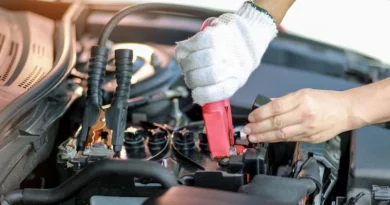The Comprehensive Guide to Flexi Pipes
Flexi pipes are crucial components of the automotive exhaust system. Designed to withstand vibrations, movement, and thermal expansion, they play a vital role in maintaining the integrity and performance of the exhaust system. Let’s explore everything you need to know about flexi pipes, from their purpose and construction to their benefits, common issues, and maintenance tips.
Understanding the Purpose of Flexi Pipes
Flexi pipes serve multiple purposes within the exhaust system, including:
Absorbing Vibrations
As the engine generates vibrations during operation, flexi pipes act as flexible joints, absorbing these vibrations and preventing them from transferring to other components.
Accommodating Movement
The flexi pipe’s flexibility allows for movement between different sections of the exhaust system, compensating for changes caused by engine torque, temperature variations, and vehicle flex.
Reducing Stress: By minimizing stress on other exhaust system components, such as the manifold or catalytic converter, flexi pipes help prevent premature wear and potential damage.
Construction and Design
Flexi pipes are typically constructed using a combination of metal strips and bellows, allowing for flexibility while maintaining structural integrity. The metal strips are interlocked or corrugated to provide strength and flexibility, while the bellows consist of accordion-like folds that accommodate movement. These components create a durable and flexible connection between exhaust system segments.
Benefits of Flexi Pipes
Flexi pipes offer several benefits, including:
Enhanced Durability and Improved Performance
By absorbing vibrations and accommodating movement, flexi pipes help reduce stress on other exhaust components, extending their lifespan. The flexibility of flexi pipes helps maintain optimal exhaust flow, ensuring proper engine performance and efficiency.
Noise Reduction
Flexi pipes can help reduce exhaust system noise by absorbing vibrations and limiting the transmission of sound waves.
Easy Installation and Replacement
Their design allows for straightforward installation and replacement, simplifying maintenance and repairs.
Common Issues with Flexi Pipes
While flexi pipes are designed to be durable, they can experience issues over time. Some common problems include:
Corrosion and Cracking/Leaks
Exposure to moisture, road salt, and harsh environmental conditions can cause corrosion and rust, compromising the integrity of the flexi pipe.
Extreme temperature fluctuations, excessive vibrations, or impact from road debris can lead to cracks or leaks in the flexi pipe.
Restricted Flow
Accumulated debris, such as carbon deposits or catalytic converter fragments, can restrict exhaust flow through the flexi pipe, negatively impacting engine performance.
Maintenance and Care Tips
To ensure the longevity and optimal performance of flexi pipes, consider the following maintenance and care tips:
Regular Inspections
Routinely inspect the flexi pipe for signs of damage, corrosion, or leaks. Pay attention to visible cracks, rust, or loose connections.
Address Issues Promptly
If you notice any problems, such as exhaust leaks or unusual noises, have the flexi pipe inspected and repaired or replaced as necessary.
Gentle Driving
Avoid aggressive driving habits that can subject the flexi pipe to excessive stress and vibrations.
Avoid Extreme Temperature Changes
Limit exposure to extreme temperature fluctuations, as they can contribute to the deterioration of the flexi pipe.
Clean the Exhaust System
Regularly clean the exhaust system, including the flexi pipe, to remove any debris or carbon deposits that may restrict exhaust flow.
Replacement Considerations
When it comes to replacing a damaged or worn-out flexi pipe, it’s essential to consider a few factors:
OEM or Aftermarket
Decide whether you want to opt for an original equipment manufacturer (OEM) flexi pipe or an aftermarket alternative. OEM parts are designed specifically for your vehicle make and model, ensuring a precise fit and compatibility. Aftermarket options may offer cost savings or performance enhancements but may require careful selection to ensure proper fitment.
Quality and Material
Choose a flexi pipe made from high-quality materials, such as stainless steel or aluminized steel, which offer durability and resistance to corrosion. Consider factors such as the thickness of the metal and the quality of the bellows to ensure long-lasting performance.
Professional Installation
While some experienced DIY enthusiasts may attempt to replace the flexi pipe themselves, it is often best to rely on a qualified mechanic or exhaust system specialist. They have the expertise and tools to ensure proper installation and can address any other issues that may arise during the process. Turborevs has one of the best flexi pipes and replacements available.
The Cost of Flexi Pipe Replacement
The cost of replacing a flexi pipe can vary depending on factors such as the vehicle make and model, the quality of the replacement part, and the labor rates of the chosen repair shop. OEM flexi pipes generally come at a higher cost compared to aftermarket options. It is advisable to obtain quotes from different sources and consider the overall value, including the quality of the part and the installer’s reputation.
The Lifespan of Flexi Pipes
The lifespan of a flexi pipe can vary depending on various factors, including driving conditions, maintenance practices, and the quality of the flexi pipe itself. On average, a well-maintained flexi pipe can last anywhere from 5 to 10 years. However, certain conditions, such as exposure to harsh climates or off-road driving, may accelerate wear and require more frequent replacements.
Conclusion
Flexi pipes play a vital role in maintaining the integrity and performance of the exhaust system. By adhering to regular maintenance practices, addressing issues promptly, and considering quality replacements when necessary, you can ensure that your flexi pipe lasts longer and contributes to a smooth and efficient exhaust system operation. Remember to consult with professionals for accurate diagnosis, installation, and replacement, as their expertise can ensure optimal performance and maximize the lifespan of your flexi pipe.


![How to Change a Tire of a Lowered Car [10 Easy Steps]](https://www.mydrivecar.com/wp-content/uploads/2023/02/How-to-Change-a-Tire-of-a-Lowered-Car-390x205.webp)

